Drygrange Old Bridge
Bridge In Melrose, Borders
A smart 1700s bridge, ahead of its time, sat tight on the banks of the Tweed.
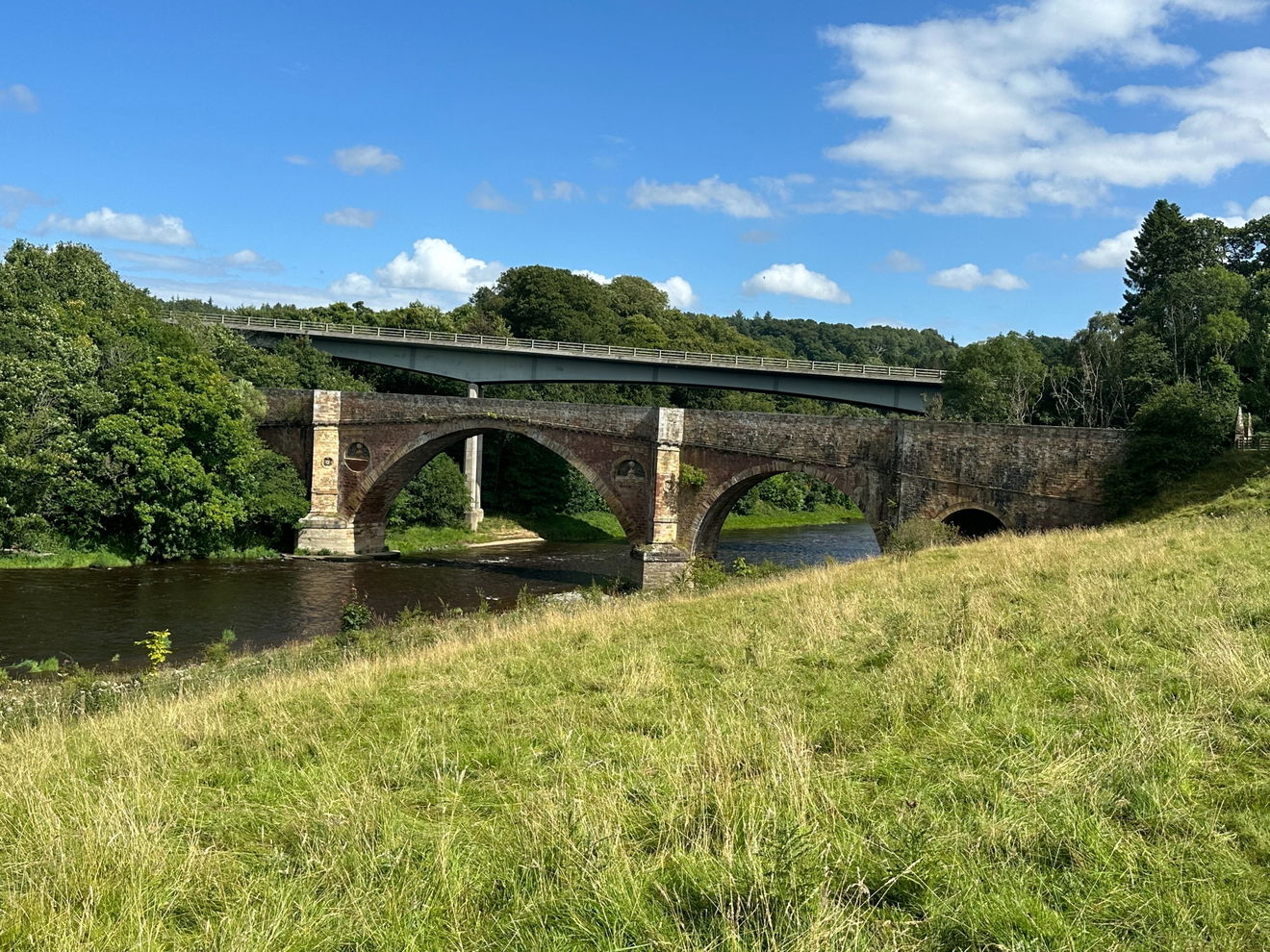
In 1768 an act of parliament was passed which allowed the construction of a road from Lauder to Carter Bar. This road was to become the A68 and an avenue of much joy to me and my family 256 years later!
Over these centuries, the Tweed has developed a collection of fine bridges spanning its waters and the bridges at Leaderfoot in the parish of Melrose are all very different in uses and appearance. Records indicate that this point in the river was always a crossing point and with a Roman fort at Trimontium just up the way, a bridge would have been likely at such a major crossing point, conveying the Roman Dere Street north from the fort.
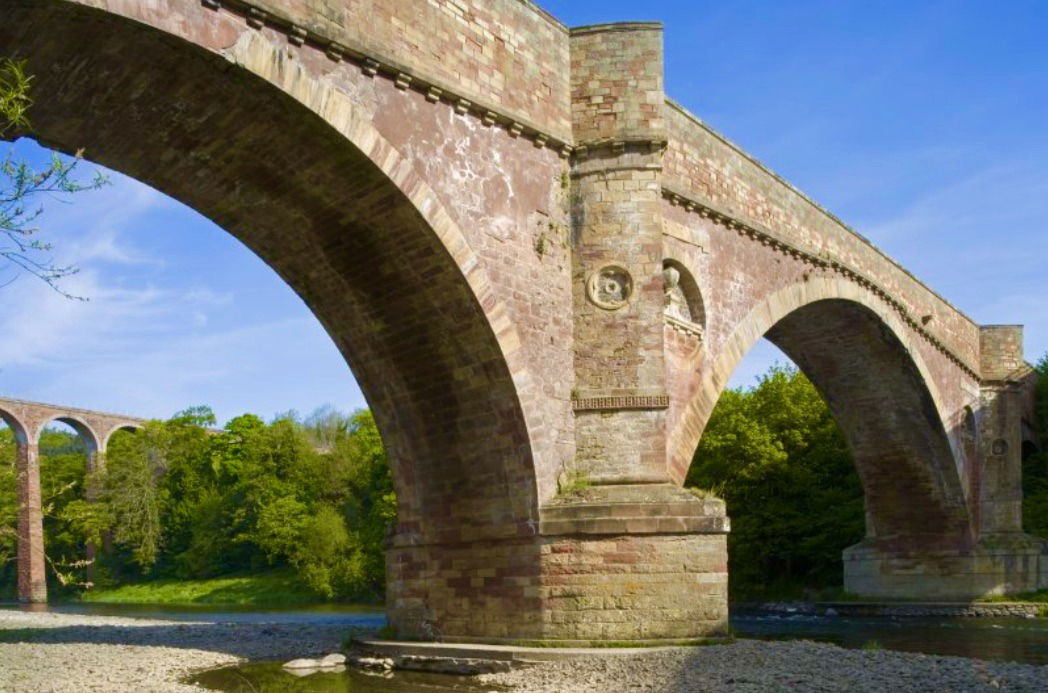
Alongside the building of the new road, the Drygrange Old Bridge was built between 1778-80, presumably in response to this newfangled road business! It replaced a ferry which took people over the river for a fee and was known as the 'Fly boat bridge'.
Alexander Stevens was the architect. A rock and roll bridge builder and engineer of his time, he was a renowned architect. 'The Buildings of Scotland' notes his “innovative use of French style curved and pointed cutwaters” and states they were “probably inspired by Robert Mylne's building of Blackfriars Bridge” across the Thames. I like a big thinker, especially on a small spanning bridge in the Borders! His classy cutwaters featured again on his design for the Teviot Bridge in Kelso.
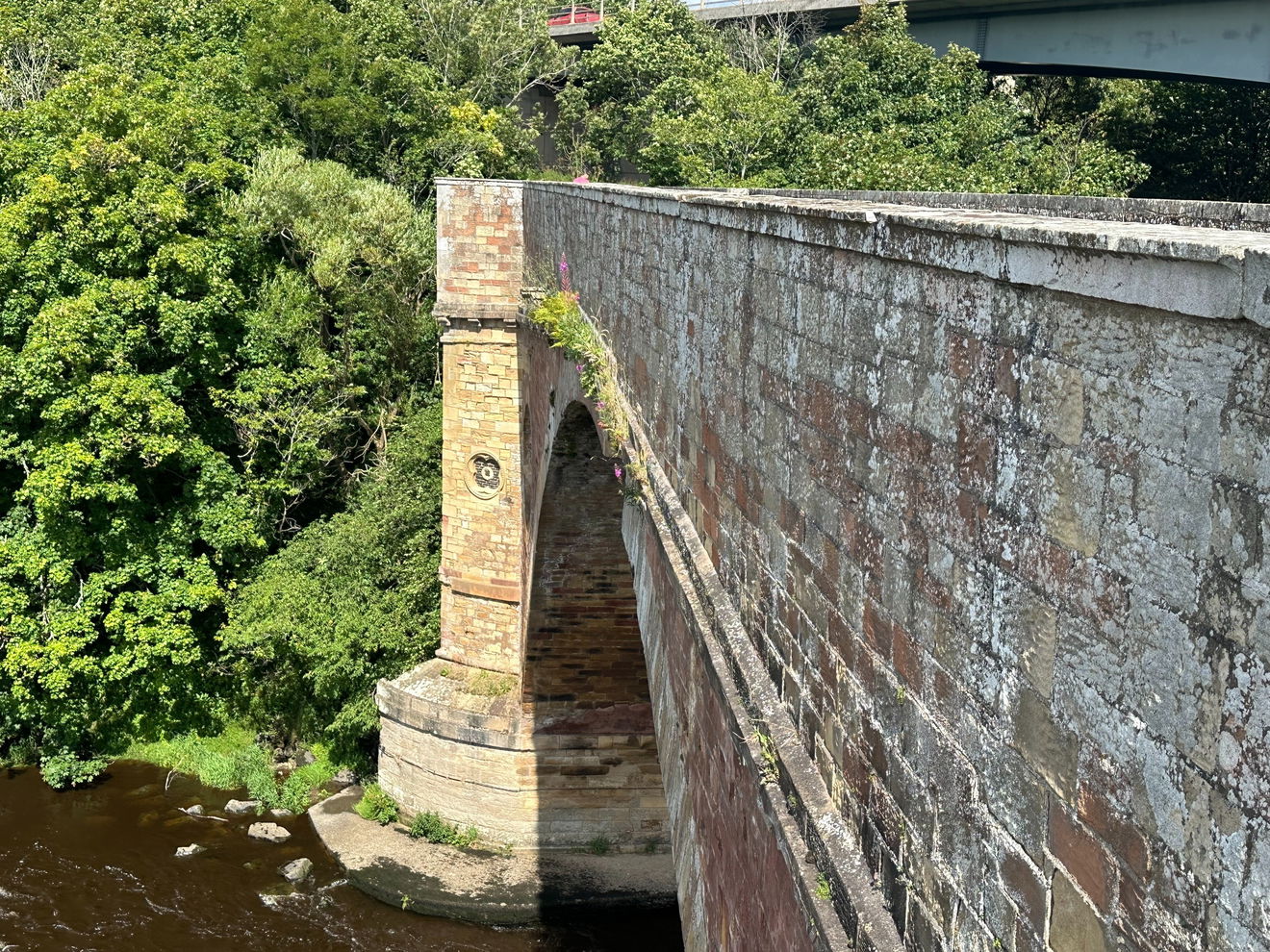
Spanning 32 metres, the bridge is made up of one larger central arch reaching a height of ten metres, two side spans of 17 metres and a smaller arch to the south which is known as an accommodation arch. This had me puzzled as it didn't look liveable inable! On checking, an accommodation arch on a bridge is an arch that preserves a pre-existing private road or path when a major transport route is built across it.
Round-headed or semi-circular arches are often used in accommodation bridges to allow access between fields and minor lanes and this looks about right for the south side of the Drygrange Bridge. The arch is less decorative and more functional than the others and a little walkway on the Leader Water path, by the river ran through it.
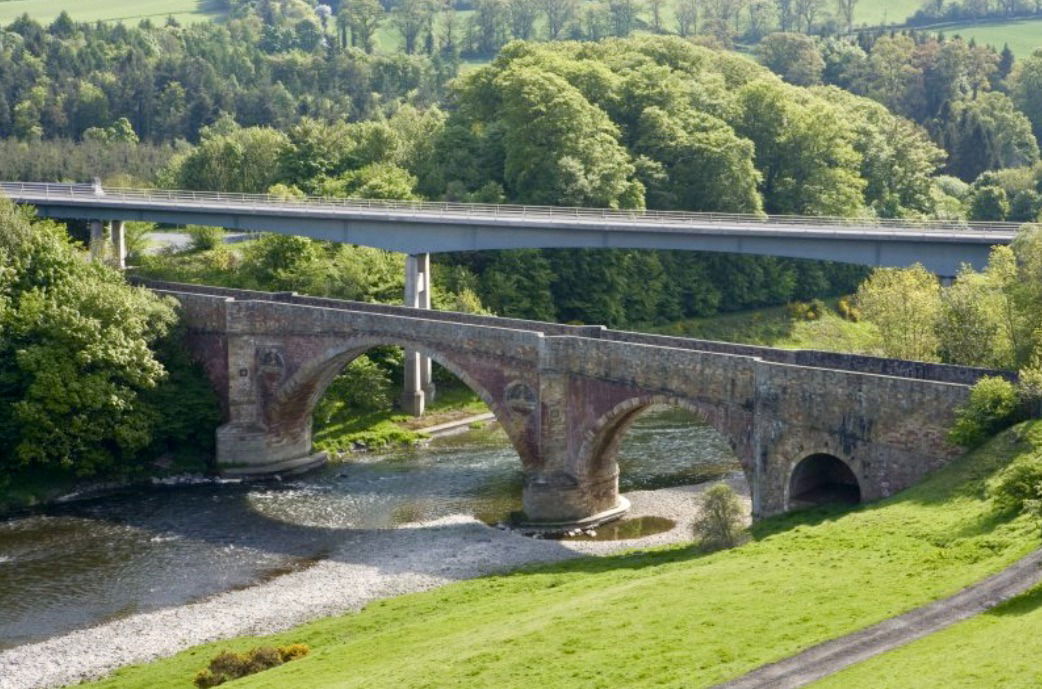
The bridge was bathed in beautiful summer sunshine in early August so looking its best, but it was made of good stuff. Built from red and buff sandstone and whinstone you can recognise the subtle colour differentiations in the stonework.
For its time, it was certainly a bit of a back of the net bridge! The classy, rounded cutwaters were new-fangled in the late 1700s. The huge stones were cut to emulate the prow of a boat with their role being to deflect debris in the rushing water, to break up ice and reduce pressure on the bridge and they don't just lie at the base of the bridge but are carried all the way up to top of the bridge and form two triangular pedestrian refuges at either end of the central span.
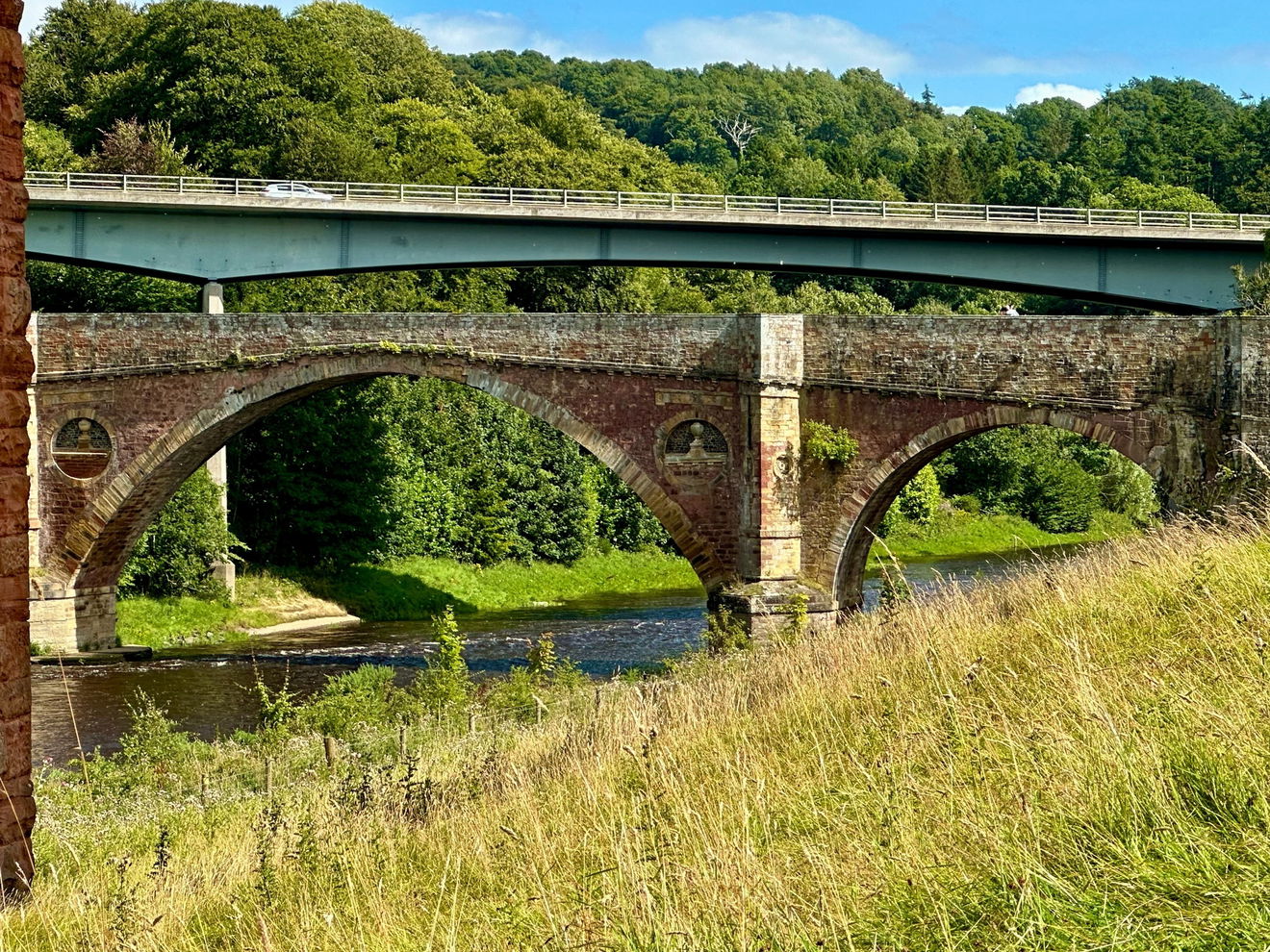
The thickness of the wall which runs the full height of the bridge therefore reinforced these little triangular cutouts for pedestrians. “Step aside young Archie. A horse and cart is approaching!” They also provide great platforms to view the Leaderfoot Viaduct a little further up the river.
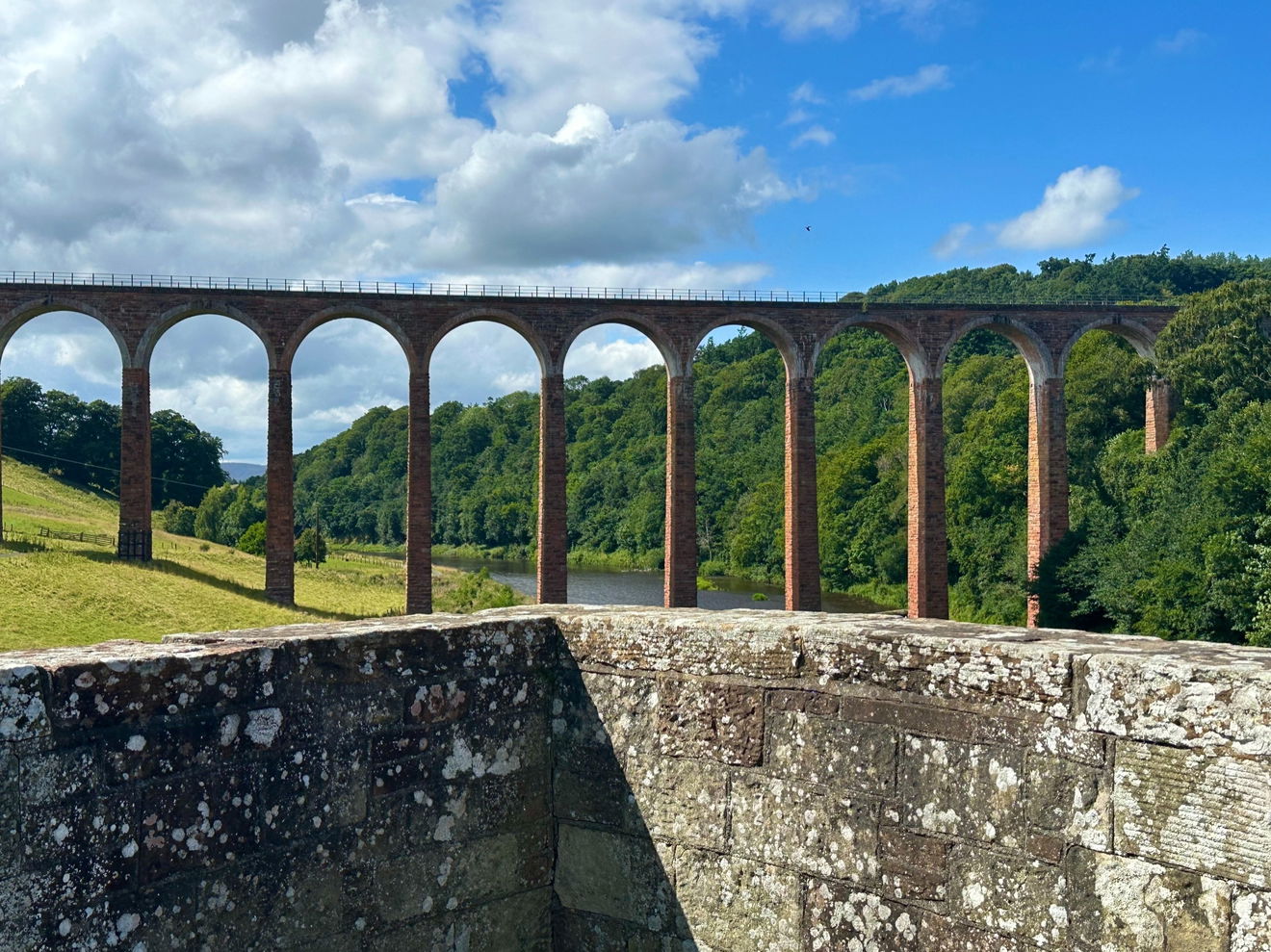
It looks like a hefty old length of bridge but was made light work of by the engineering of hollow spandrels (who doesn't love a hollow spandrel?), a technique devised by Scottish civil engineer Thomas Telford, also known as Colossus of Roads. D'you see what they did there, those witty Georgians. The hollow spandrels are built into bridges to reduce the weight on the arches, and for its time, the central span of 32 metres for this type of bridge was remarkable.
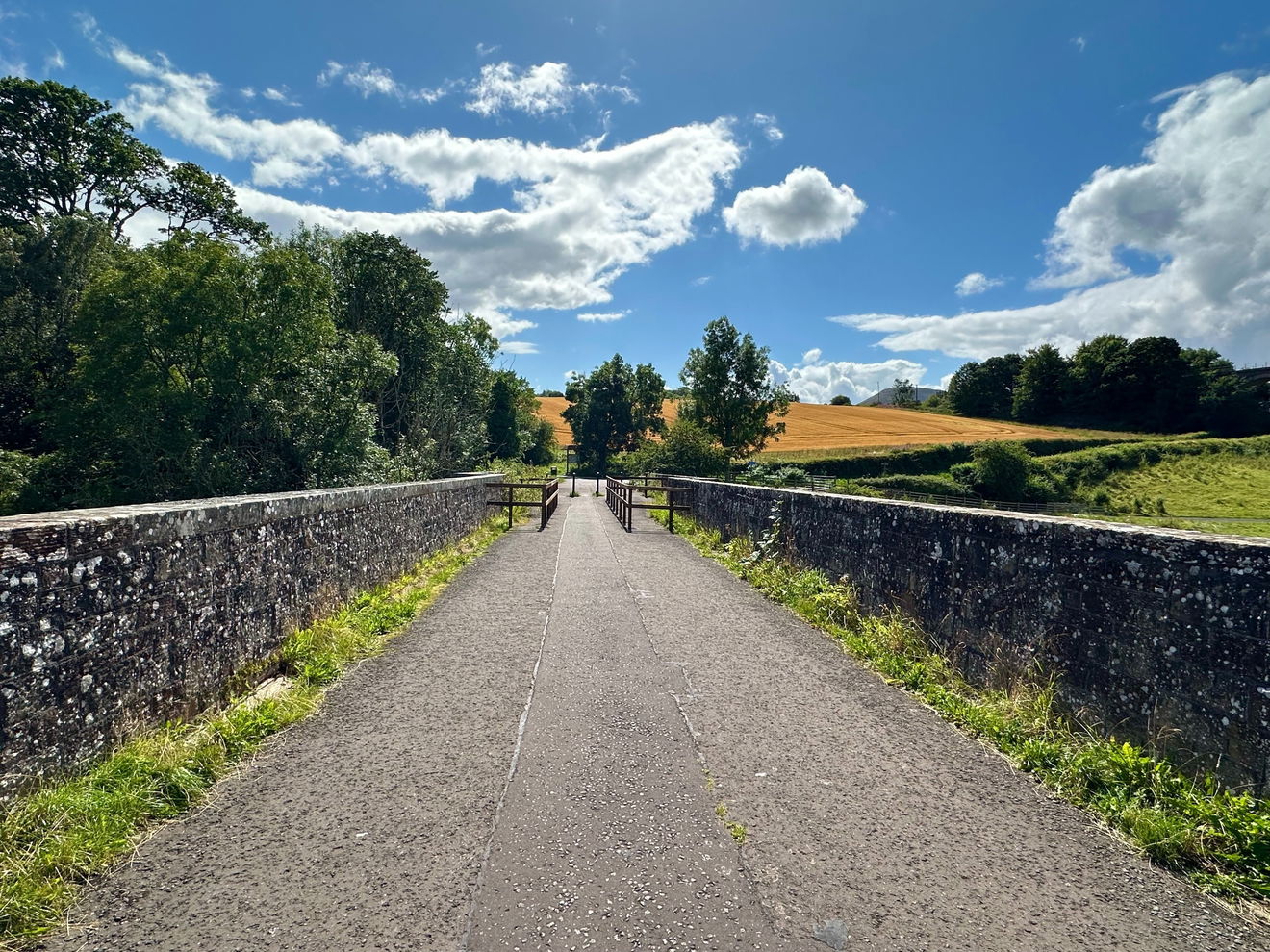
Stevens didn't set out simply to focus on the functional role of the Drygrange Bridge. Its decorative features also shine. The bridge itself holds ornamental quatrefoil medallions on the faces of the buttresses. There are large circular cutouts on the face of the bridge itself, which hold yellow sandstone urns on a raised platform. Both adornments are backed in grey stone which contrasts with the soft salmon and yellow of the sandstone.


Above is an embellished mantle with deep set crosses. All quite detailed and perhaps superfluous considering people would be riding over the bridge and no longer travelling under it, but the elaborate extravagance makes it attractive to the eye as well as functional.
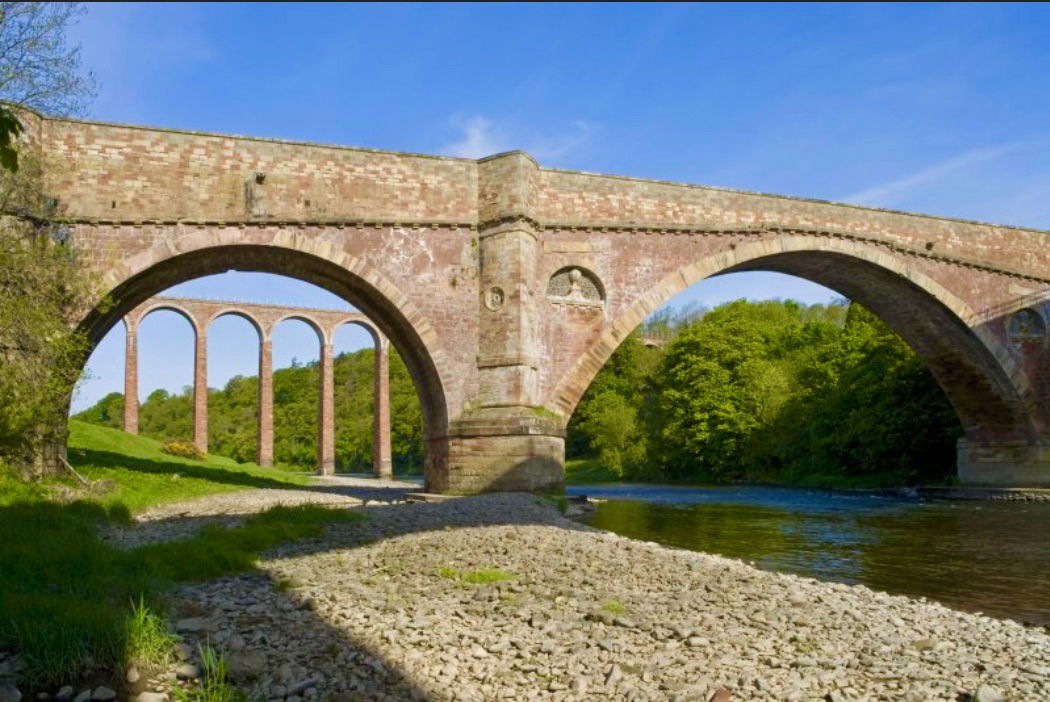
The icing on the bridgey cake is the addition of conical finials at either side of the bridge as you approach. This was definitely an all singing all dancing new way to travel over the Tweed for its time. There is nothing small scale. All the stops have been pulled out by Stevens and this bridge is indeed a beautiful little mode of motion for people to have travelled from North to South and vice versa without getting their feet wet!
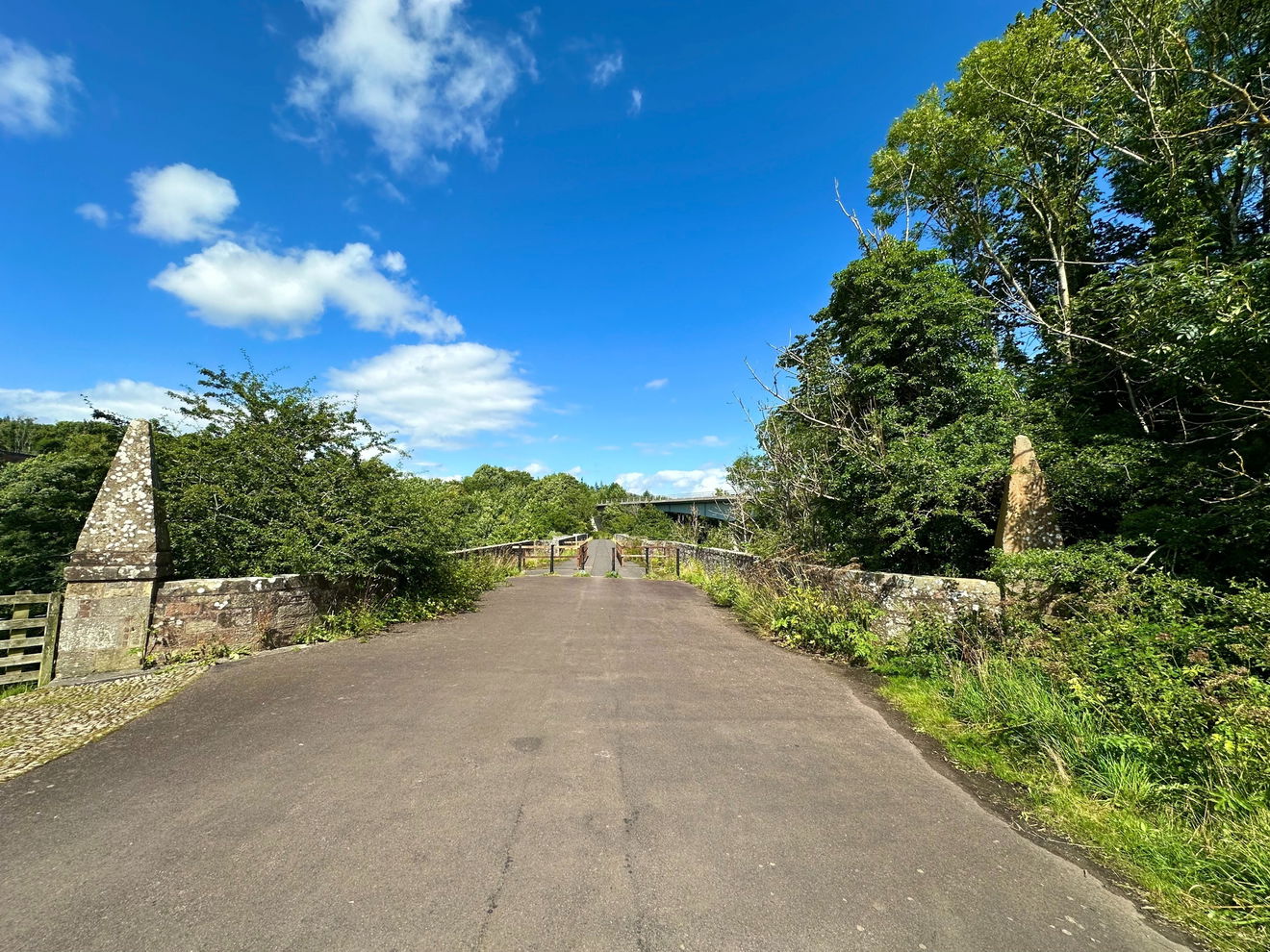
For a little over 190 years the Drygrange Bridge was the main means of transportation over the Tweed at this point. In 1974, it was felt that the small bridge built by Stevens at the end of the 1700s no longer cut the mustard for increasing levels of traffic and larger, heavier vehicles, as so, this beautiful bridge was retired and now offers a piggyback over Leader Water to curious tourists and dog walkers on a daily basis!
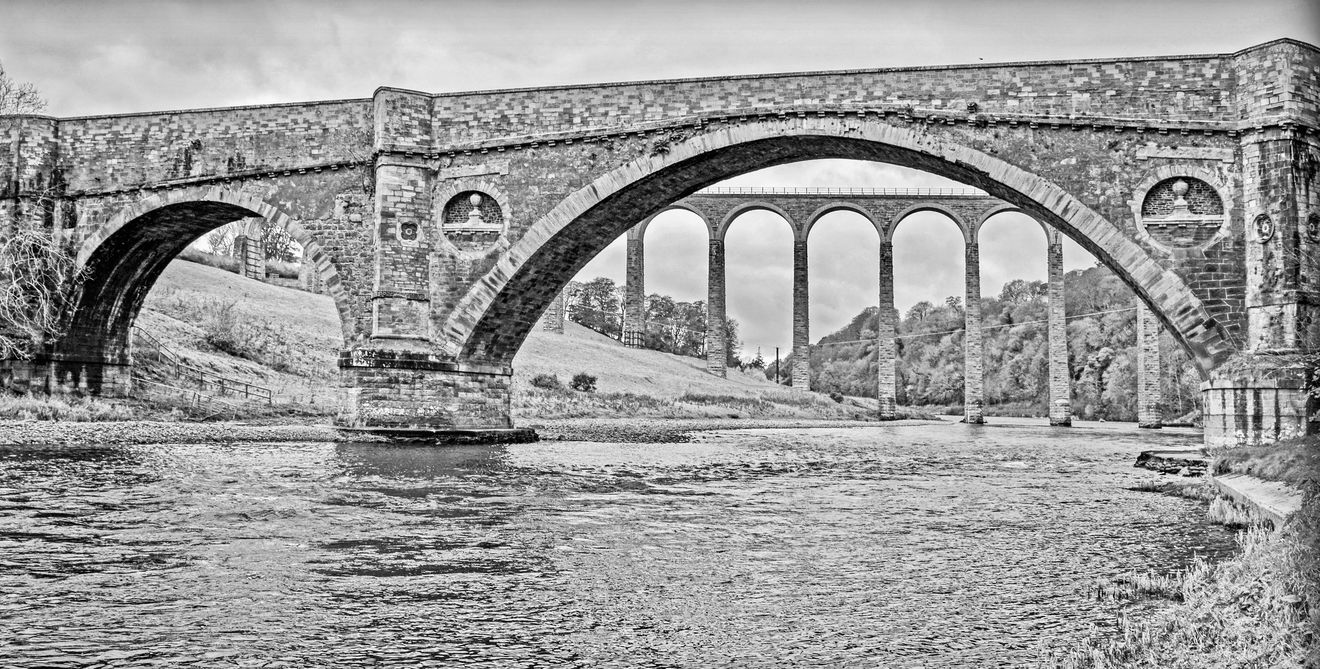
You can find the Drygrange Old Bridge just off the A68 at TD6 9DF. It's a disused road bridge crossing the Tweed near Melrose in the Scottish Borders.
Alexander Stevens was the architect. A rock and roll bridge builder and engineer of his time, he was a renowned architect. ‘The Buildings of Scotland’ notes his “innovative use of French style curved and pointed cutwaters” and states they were “probably inspired by Robert Mylne’s building of Blackfriars Bridge” across the Thames. I like a big thinker, especially on a small spanning bridge in the Borders! His classy cutwaters featured again on his design for the Teviot Bridge in Kelso.
Get 2 points if you have visited this place. Already visited by 43 VIPs.
Login to the VIP area to add places to your bucket list, mark them as visited and more importantly see where you rank on the league table.
How To Find Drygrange Old Bridge
Where Is Drygrange Old Bridge?
Lat / Long
55.603938, -2.675568
What three words
Where To Park For Drygrange Old Bridge?
Lat / Long
55.602428, -2.6749
What three words
You can park in the large Leaderfoot layby which is signposted off the A68. There is plenty of free parking.
Contributed by Jos Forester-Melville
Highland loving human. Thalassophile. I love a good smile. Happiest heading for the hills with my pickup filled with kids and dogs! Working four days, we enjoy a Fridate, and usually spend it scouting out new scenery. I love a gated track, a bit of off roading and if it involves a full ford, well, that gets extra points! I go nowhere without a flask and binoculars, and love the small things in life that make it big…Goldcrests, dry stone walls, Deadman’s fingers, blackberries and quality clouds.
More Places from Jos
More Places In Melrose
Find more fabulous places in Melrose, Borders and if you know of a place we haven't listed, then let us know.
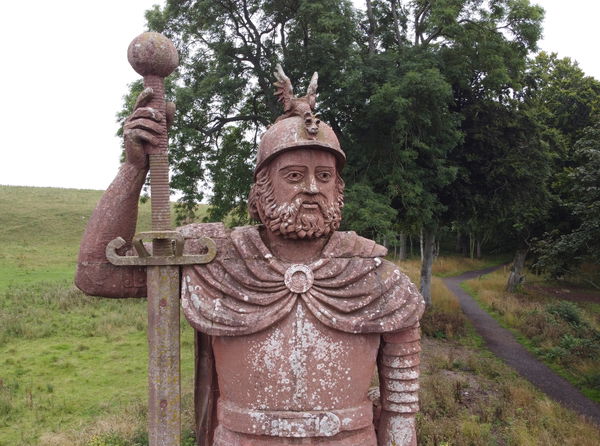
William Wallace Statue
Statue Melrose BordersA red sandstone statue of William Wallace overlooking the River Tweed Valley near Melrose.
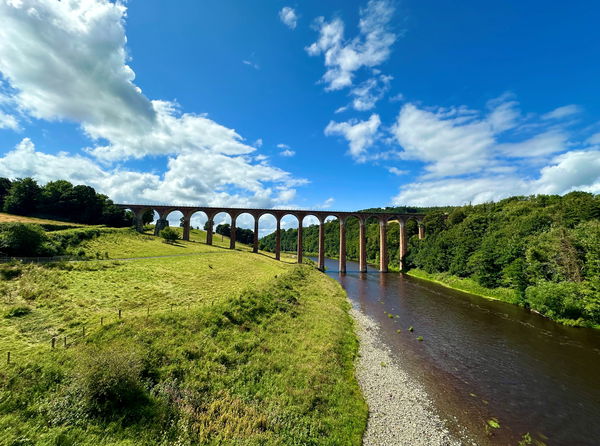
Leaderfoot Viaduct
Bridge Melrose BordersNineteen russet arches span the Tweed at Melrose. The Leaderfoot is a striking landmark of Victorian engineering in the Borders.
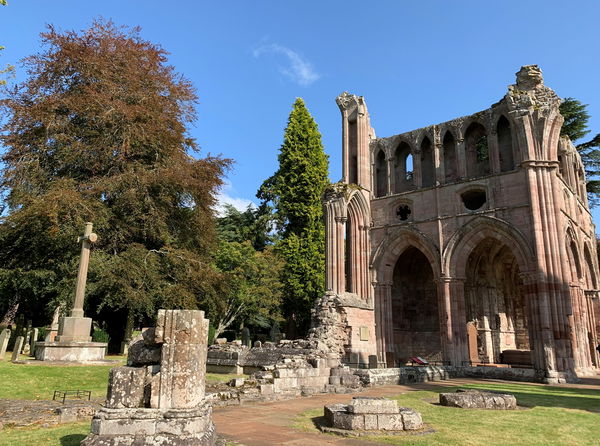
Dryburgh Abbey
Religious Place Melrose BordersA ruined abbey sitting in a secluded woodland on the banks of the River Tweed.
More Bridges
So this bridge wasn't enough and you want more? Don't worry we have you covered.
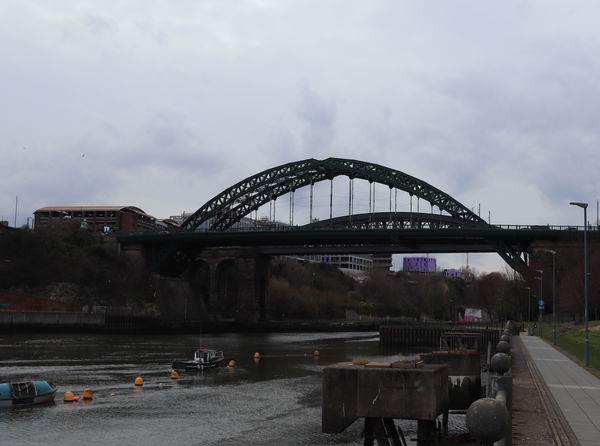
Monkwearmouth Bridges
Bridge Sunderland Tyne And WearA single-span, through arch road bridge, built in 1928-29 by Sir William Arrol and Company Ltd., and designed by Mott, Hay and Anderson, and a bowstring arch railway bridge built in 1879.
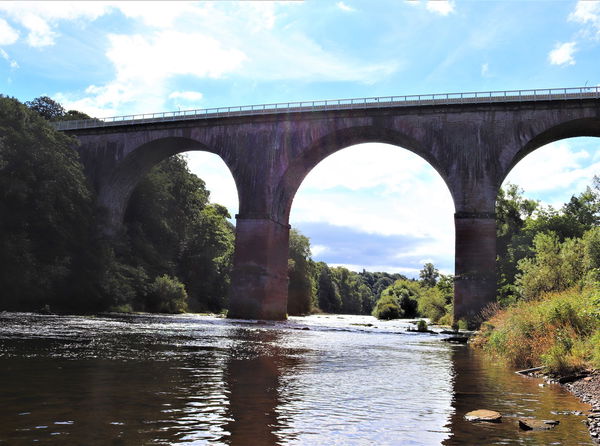
Wetheral Viaduct - Corby Bridge
Bridge Wetheral CumbriaA maginificent viaduct spanning the River Eden in Wetheral.
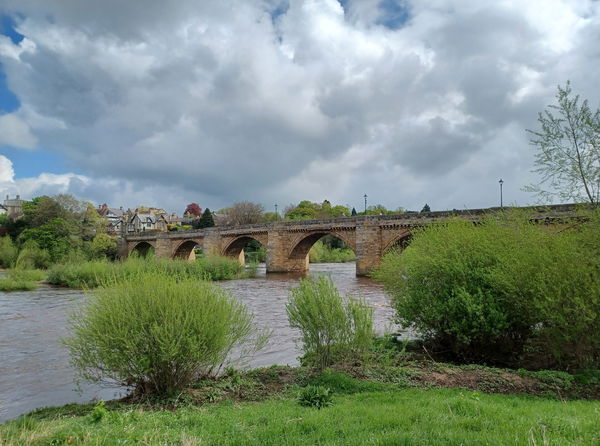
Corbridge Bridge
Bridge Corbridge NorthumberlandA 17th century stone bridge over the River Tyne that is the oldest surviving bridge over the River.
Never Miss A Fabulous Place
If you are afraid of missing out on all the fabulous places we post, or just want to be the first to know, then sign up to the Fabulous North.
Each week we will email you all the brand new places that we visit.
Sign Up To AlertsFind Us On Facebook
We post all our new places daily on our Facebook Groups page, so join the group today and be notified when we add a new place.
Join Our Facebook Group
